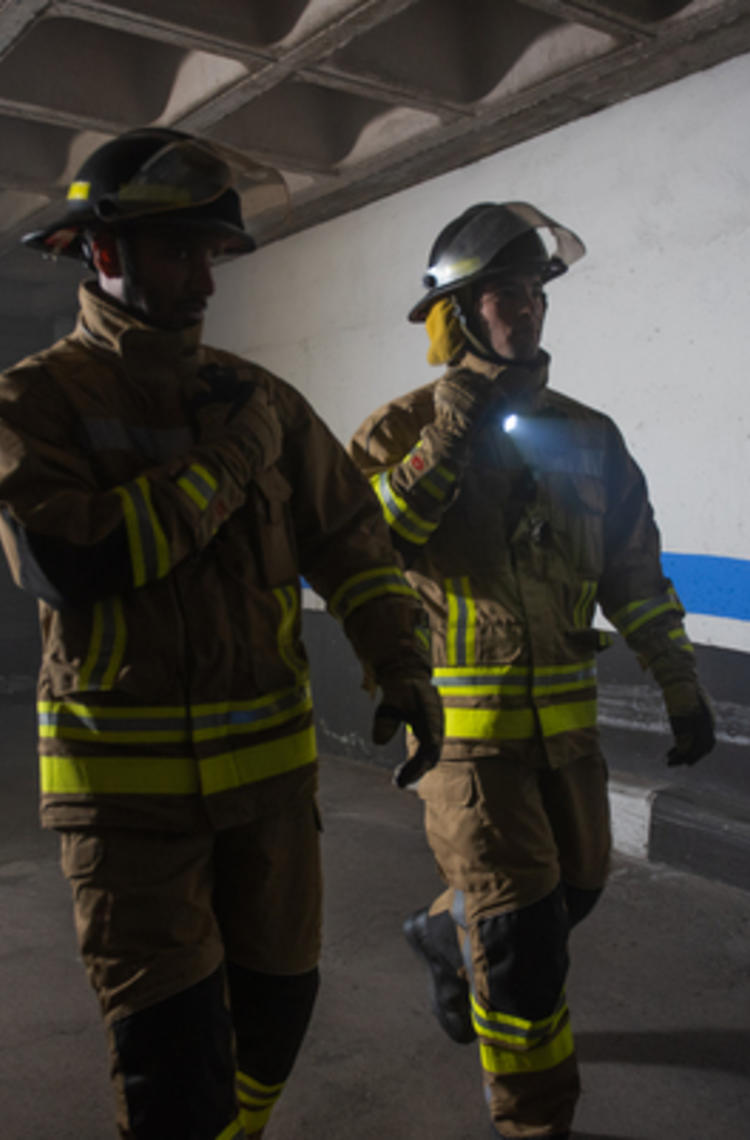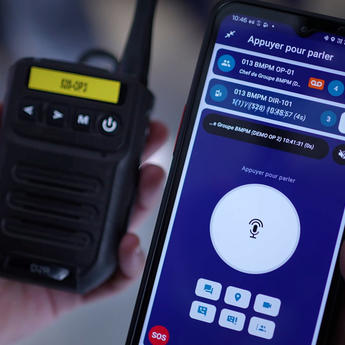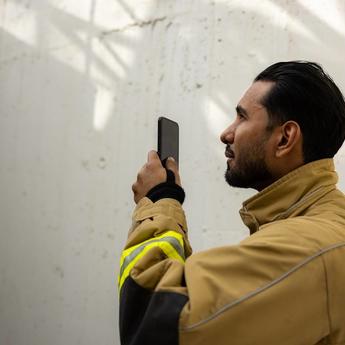For decades, direct mode communication has been a critical feature for public safety responders, ensuring they can operate safely and effectively even when network coverage is unavailable. This feature is built into currently used narrowband radio systems, such as TETRA or Tetrapol. When responders move beyond network reach, for example, during an operation with multiple rescue departments in remote terrain, they can simply switch their radios to direct mode and continue to communicate directly with each other over short distances. This has guaranteed reliable, mission-critical voice communication regardless of infrastructure. As broadband technologies become more common in public safety operations, maintaining the same level of reliability must be recognised and addressed to keep first responders connected and operations efficient.
Read more about France’s RRF network project that is a major step forward for public safety, replacing legacy Tetrapol systems with a secure, high-speed broadband solution: The RRF – radio network of the future
In this article, we present the Agnet direct mode solution, which introduces a separate supporting smart speaker microphone device in addition to the MCX solution in the smartphone to overcome potential network loss.

Photo: ACMOSS 2025
Reinventing direct mode for the broadband era
While broadband networks have transformed the way public safety organisations are able to exchange more advanced information, coverage gaps continue to pose a serious limitation. In rural areas, deep valleys, forests, or underground environments such as basements or tunnels, broadband signals often fail to reach responders. Traditionally, this has not been a problem for users of legacy TETRA or Tetrapol radios, which include an integrated direct mode feature allowing devices to communicate directly with each other. When an incident occurs outside network coverage, officers can simply switch to this mode and maintain group communication without relying on any infrastructure.
As public safety agencies migrate from dedicated narrowband radio networks such as TETRA and Tetrapol to mission-critical broadband solutions, the challenge of maintaining uninterrupted communication becomes more complex. Smartphones and 4G- and 5G-based push-to-talk applications depend entirely on standard network connectivity, often working reliably only within a range of a few metres over Wi-Fi or Bluetooth. This is where direct mode communication comes in – providing a complementary, locally resilient capability that enhances safety, reliability and operational efficiency when the main network is congested, degraded or unavailable.

Photo: ACMOSS 2025
Introducing the Agnet direct mode solution
To address this gap, Airbus has developed a solution with a combination of smart speaker microphone and a dedicated MCX solution, called “Agnet Direct”. Building on a device already familiar to radio users, this accessory connects physically or wirelessly to a certified public safety smartphone and enables direct device-to-device communication even when broadband coverage is not available. The smart speaker mic acts as both a robust audio accessory and a communications bridge, featuring essential controls such as push-to-talk, channel selection, and emergency buttons. By integrating this accessory, responders gain the resilience of traditional direct mode within a modern broadband system. The smartphone can remain in the pocket, while the smart speaker mic ensures seamless voice communication both on and off the network.
Four different operational modes
Although restoring the direct mode functionality remains the solution’s primary purpose, Agnet Direct also offers four distinct operational modes that enhance flexibility and situational awareness for public safety teams.
- In Network Mode, communication takes place over 4G or 5G networks, while a standby direct mode remains ready to activate whenever needed. This backup channel can switch on automatically if network coverage is lost, or it can be enabled manually by the user. The physical control buttons on the device or accessory can also be configured to access different talk groups.
- The Direct Mode automatically activates when the system detects a loss of network coverage. Responders can continue communicating seamlessly, even in basements, dense forests, or other network-deprived areas.
- Dual Mode is designed for, for example, team leaders such as police commanders or fire chiefs who need to lead the team in Direct Mode and keep the headquarters beyond DMO reach informed about what is going on. With two push-to-talk buttons on the speaker mic accessory, the leader can communicate both over the network and via direct mode separately and/or simultaneously. This ensures critical instructions reach all team members, whether they are connected or out of range.
Finally, Gateway Mode allows all voice communication and alerts originating in direct mode to be automatically transmitted over the network to command centres, such as emergency call centres, without requiring the field leader to manually retransmit the message. This integration ensures that critical information flows smoothly from responders on the ground to central coordination hubs, saving time and reducing the risk of miscommunication.
Get a quick overview with our flyer

Photo: ACMOSS 2025
How Agnet Direct can be used in real-life scenarios
To better illustrate how Agnet Direct is used in everyday public safety scenarios, we present two use cases.
Overcoming network coverage gaps in underground operations
A first response team enters an underground parking garage to rescue a person, but communication with the command room is severely disrupted due to the concrete structure and the lack of mobile network coverage. This creates difficulties in transmitting critical situational information and delays coordination with reinforcements. In this scenario, responders underground rely on the solution’s Network Mode, which automatically switches to a backup direct mode channel whenever network coverage is lost. This allows the team to maintain seamless communication among themselves and with the operations chief, who remains outside the building and in contact with the control room. Meanwhile, the operations chief uses Dual Mode to simultaneously communicate with the field team via the direct mode channel while coordinating reinforcements through the MCX talk group over the broadband network. This combined approach ensures that vital information flows uninterrupted, enabling efficient and safe management of the incident.
Critical communications in isolated forest and rural areas
Municipal police or firefighters responding to an isolated forest, mountain, or countryside location often face little to no cellular or radio coverage, creating a critical communication gap between responders on site. In this situation, the solution’s Direct Mode is activated, allowing nearby officers to maintain seamless voice communication despite the lack of network infrastructure. Simultaneously, one user engages Gateway Mode to relay communications from the remote area back to the control room, ensuring the command centre maintains full situational awareness and can deploy reinforcements as needed. This combination of modes enables effective coordination in challenging terrain where conventional broadband or legacy networks would fail.






